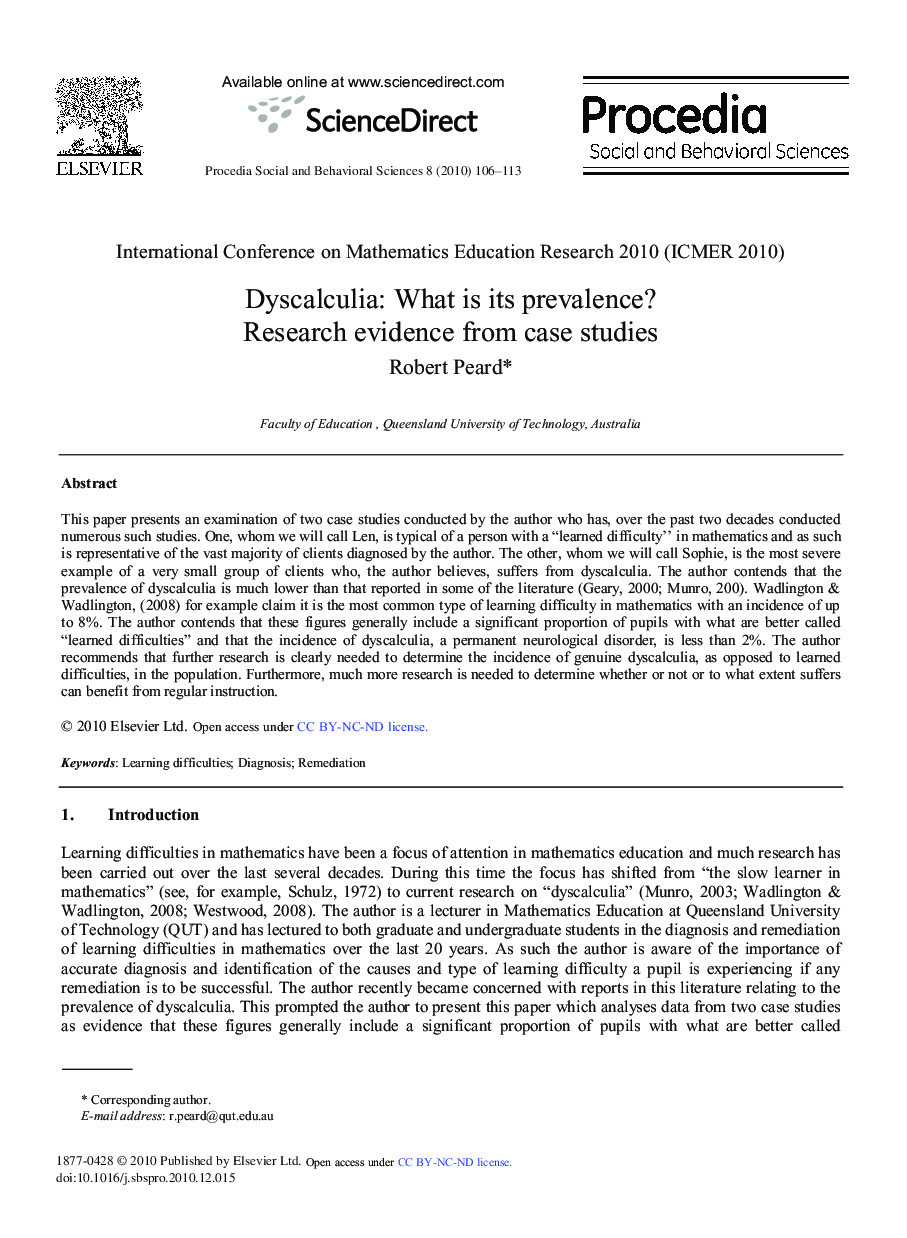| کد مقاله | کد نشریه | سال انتشار | مقاله انگلیسی | نسخه تمام متن |
|---|---|---|---|---|
| 1124738 | 1488551 | 2010 | 8 صفحه PDF | دانلود رایگان |

This paper presents an examination of two case studies conducted by the author who has, over the past two decades conducted numerous such studies. One, whom we will call Len, is typical of a person with a “learned difficulty” in mathematics and as such is representative of the vast majority of clients diagnosed by the author. The other, whom we will call Sophie, is the most severe example of a very small group of clients who, the author believes, suffers from dyscalculia. The author contends that the prevalence of dyscalculia is much lower than that reported in some of the literature (Geary, 2000; Munro, 200). Wadlington & Wadlington, (2008) for example claim it is the most common type of learning difficulty in mathematics with an incidence of up to 8%. The author contends that these figures generally include a significant proportion of pupils with what are better called “learned difficulties” and that the incidence of dyscalculia, a permanent neurological disorder, is less than 2%. The author recommends that further research is clearly needed to determine the incidence of genuine dyscalculia, as opposed to learned difficulties, in the population. Furthermore, much more research is needed to determine whether or not or to what extent suffers can benefit from regular instruction.
Journal: Procedia - Social and Behavioral Sciences - Volume 8, 2010, Pages 106-113